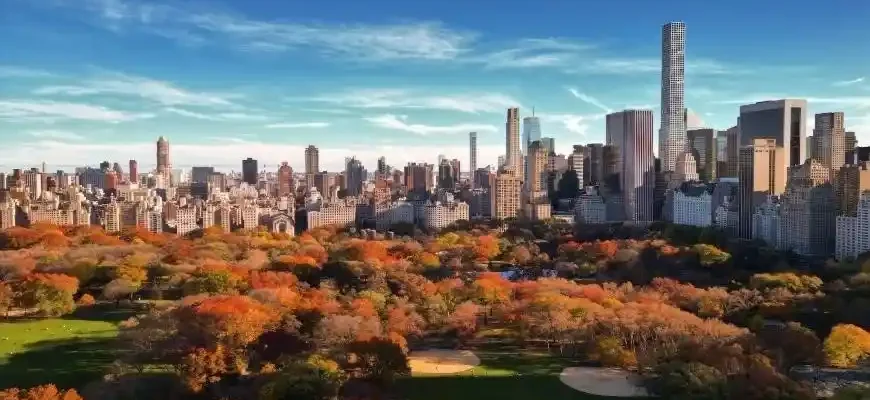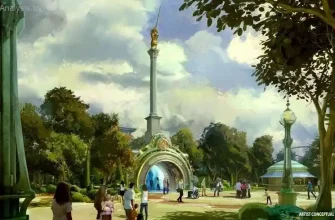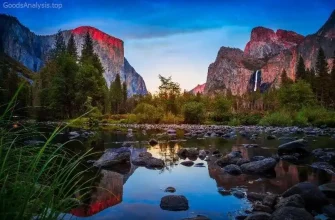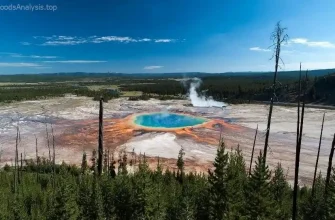1. What Makes Central Park Special?
Central Park is New York City’s iconic green lung, a sprawling 843-acre oasis in the middle of Manhattan. It is not just a park; it is an essential part of the city’s identity, offering visitors a serene escape from the urban jungle. Its blend of natural landscapes, cultural landmarks, and recreational spaces has made it a global symbol of New York’s unique harmony between nature and urban life.
Key attractions within Central Park include:
- Bethesda Terrace and Fountain: A grand, two-level platform with stunning views of the lake and beautiful architecture. This area often serves as a backdrop for music performances, street performances, and even movies.
- Bow Bridge: An iconic, cast-iron bridge that arches over the lake, providing breathtaking views of the surrounding park. It’s one of the most photographed spots in the park.
- Strawberry Fields: A tranquil memorial to John Lennon, located near the Dakota Building where he lived. The “Imagine” mosaic is a must-see for music fans.
- The Mall: A wide, tree-lined promenade perfect for a leisurely stroll, often home to street musicians and artists.
- Belvedere Castle: Offering panoramic views of the park, this picturesque, fairy-tale-like structure sits atop Vista Rock, providing a peaceful spot for park-goers to enjoy.
- Central Park Zoo: A charming, small zoo featuring a variety of animals, including snow leopards, sea lions, and penguins. It’s perfect for families or anyone looking for a quick wildlife fix.

Whether you’re enjoying the vast open spaces of Great Lawn, boating on the Central Park Lake, or simply relaxing under a tree, Central Park offers something for every visitor.
2. Visitor Tips & Practical Information
- Best Time to Visit:
Central Park is beautiful year-round. Spring (April to June) and fall (September to November) offer particularly pleasant weather, with cherry blossoms in bloom and vibrant autumn foliage. Summer (June to August) can be busy but lively, while winter (December to February) transforms the park into a serene wonderland, especially if it snows. - Opening Hours:
Central Park is open daily from 6 a.m. to 1 a.m., though some facilities within the park, like the zoo, have more specific hours (usually 10 a.m. to 4:30 p.m. in the off-season). - Ticket Prices:
Entrance to Central Park is free. However, attractions like the Central Park Zoo and the Central Park Conservatory Garden have ticket prices. Zoo tickets typically range from $14.95 for adults to $9.95 for children (ages 3-12). - Accessibility:
The park is wheelchair accessible, and there are many paths designed for easy navigation. Free wheelchair rentals are available at several locations within the park. Many of the attractions, including the zoo and the Conservatory Garden, are also wheelchair accessible.
3. History and Cultural Significance
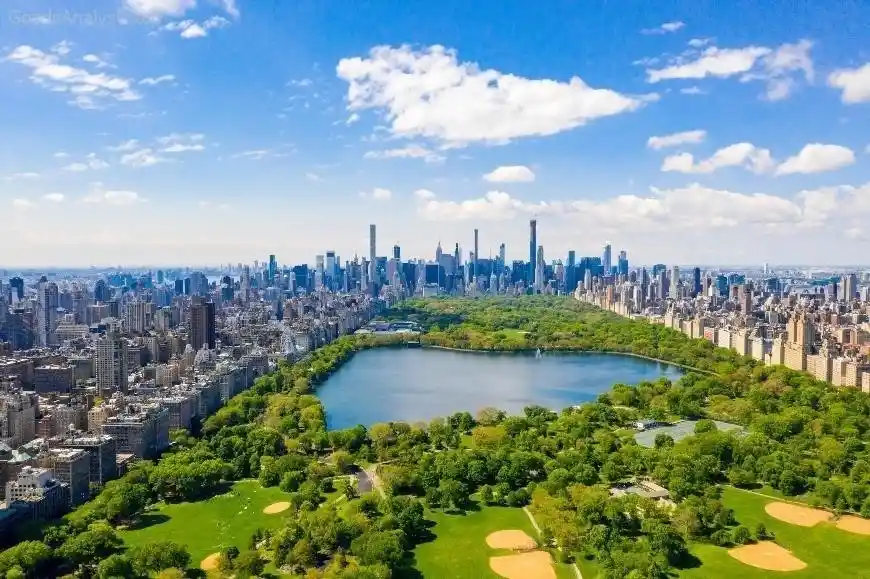
Central Park holds a special place in both New York City’s history and American cultural history. Designed by landscape architects Frederick Law Olmsted and Calvert Vaux, it opened in 1858 as the first major landscaped public park in the U.S. It was intended to provide a democratic space where all New Yorkers, regardless of class or background, could come together and enjoy nature.
Beyond its original design, Central Park has played a key role in the development of urban parks around the world. It influenced the creation of other famous parks like Golden Gate Park in San Francisco and the Bois de Boulogne in Paris. Over the years, it has also become a venue for significant cultural events and public gatherings, including concerts by the New York Philharmonic and the famous New York City Marathon.
The park has a rich cultural legacy, featuring prominently in films, literature, and music. It’s impossible to visit without encountering traces of its appearances in pop culture, from the opening sequence of Friends to the sweeping shots in movies like Home Alone 2 and Breakfast at Tiffany’s.
4. What to Expect When You Visit Central Park
Visiting Central Park feels like stepping into a different world, despite its location in the heart of one of the busiest cities in the world. Upon entering, you’re met with an unexpected sense of calm. The park’s carefully curated landscapes mix vast open fields, dense woodlands, tranquil lakes, and meandering paths.
Here’s what you can expect:
- Ambiance: The park is divided into distinct areas, each offering its own atmosphere. Whether you’re exploring the quiet, wooded areas of the North Woods or enjoying the lively crowds at the Great Lawn, there’s a space for everyone. In summer, you’ll hear the distant strum of guitars, the sound of children playing, or people engaging in casual games of soccer, while in winter, there’s an air of calm with people skating on Wollman Rink or walking through snowy paths.
- Notable Experiences: Visitors can enjoy boating on the Central Park Lake, rent bikes to cycle around the park, or explore the many walking trails. In the warmer months, you can also catch open-air performances at places like the Delacorte Theater, home to Shakespeare in the Park.
- Instagram-Worthy Moments: The Bow Bridge, Bethesda Terrace, and the Imagine mosaic in Strawberry Fields are top spots for photos. The row of trees lining the Mall is another iconic shot, particularly stunning in fall when the leaves turn golden. For a panoramic view, head up to Belvedere Castle.
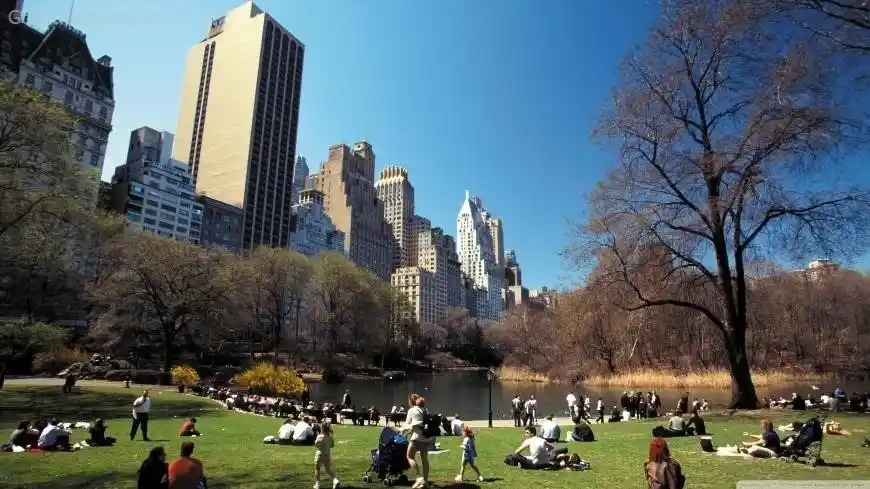
5. Nearby Attractions and Dining Options
After exploring Central Park, here are some other nearby attractions worth visiting:
- The Metropolitan Museum of Art: Located on the eastern edge of the park, the Met is one of the world’s greatest art museums, home to more than 2 million works of art spanning 5,000 years of history.
- The American Museum of Natural History: A short walk across the park will take you to this famed museum, known for its dinosaur exhibits and the Hayden Planetarium.
- Times Square: A 10-minute walk south of the park, this iconic intersection is home to bright lights, Broadway theaters, and endless entertainment.
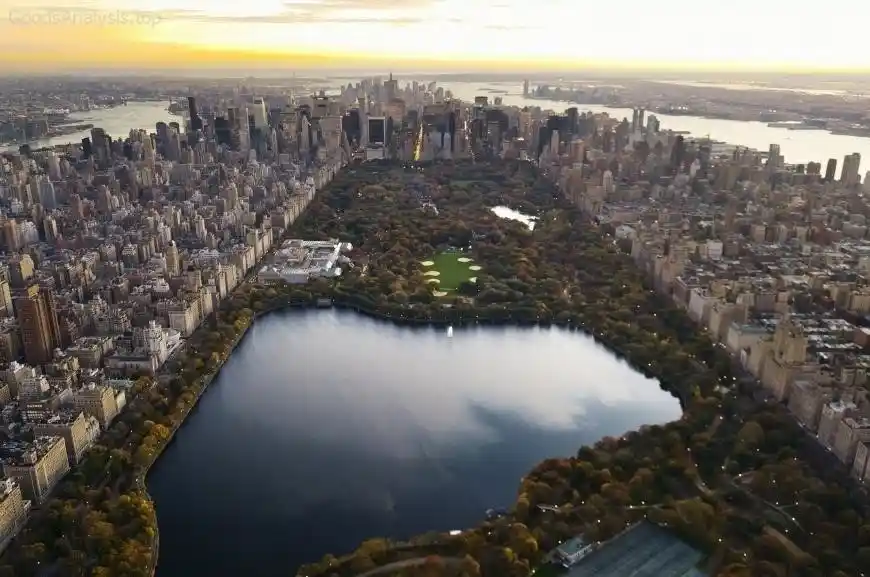
For dining, you’ll find plenty of great options around the park:
- The Loeb Boathouse: Offering classic American fare with a view of the lake, this restaurant is perfect for a special meal after a day in the park.
- Shake Shack: For a quick, delicious bite, head to this famous burger joint located on the southern edge of the park.
- Tavern on the Green: This historic restaurant offers fine dining in a beautiful, Victorian-style setting.
6. Family-Friendly and Group Travel Tips
Central Park is an ideal destination for families, with numerous kid-friendly activities:
- Central Park Zoo: Kids will love the penguins, sea lions, and the Tisch Children’s Zoo, where they can interact with friendly farm animals.
- Playgrounds: There are over 20 playgrounds spread throughout the park, with varied themes like the Ancient Playground and the Adventure Playground, which features climbing structures and creative play spaces.
- Horse-Drawn Carriage Rides: Take a relaxing tour of the park with a horse-drawn carriage ride, which is both a fun and historical way to see the sights.
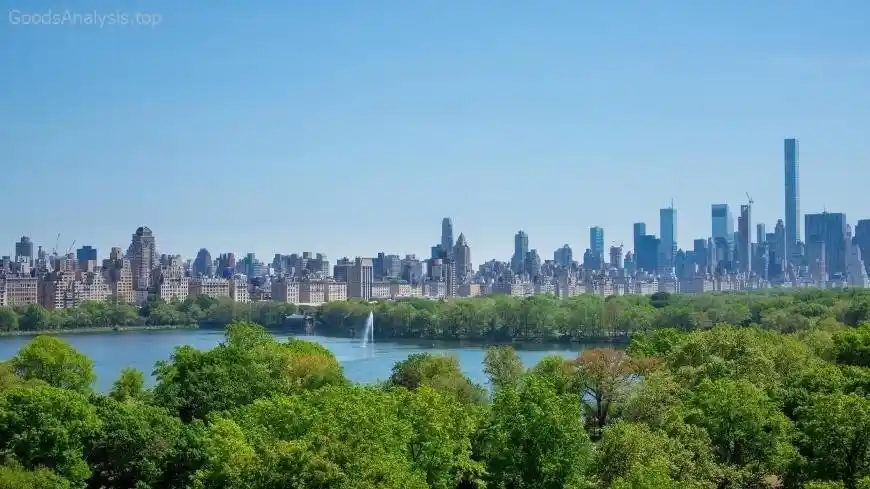
For groups, Central Park offers ample space for picnics, outdoor games, or guided tours. Group tours are available for those interested in learning more about the park’s history, wildlife, and architecture.
7. Instagrammable Moments and Photo Opportunities
Central Park is packed with photogenic spots. Some top recommendations include:
- Bow Bridge: Perfect for sunset photos.
- Bethesda Terrace and Fountain: The grand staircase and water features provide a majestic backdrop.
- The Mall: The tree-lined promenade is particularly beautiful in fall.
- The Central Park Lake: Boating on the lake offers the chance to snap a peaceful, reflective photo.
- Strawberry Fields: The “Imagine” mosaic is iconic for music fans, especially early in the morning when the crowds are light.
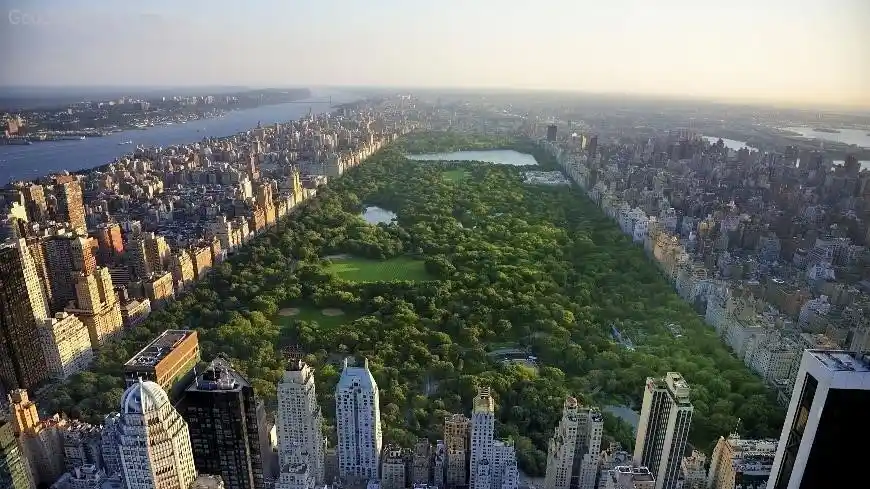
8. Travel Tips and Transportation
- How to Get There:
Central Park is easily accessible by subway, bus, or on foot. The 59th Street-Columbus Circle (A, B, C, D, or 1 trains) and the 72nd Street (B or C trains) stations are the most convenient subway stops. Alternatively, hop on a city bus that runs along major routes like 5th Avenue or Central Park West. - Best Transportation:
Walking is the best way to explore the park. If you’re short on time, bike rentals are widely available and offer a fun, quick way to cover more ground. You can also use Citi Bike, New York City’s bike-share program, to explore the park and its surroundings.
9. Safety and Etiquette Tips
- Safety: Central Park is generally safe, but like any large public space, it’s best to stay alert, especially in less crowded areas. Always stick to well-lit paths after dark, and be cautious around secluded areas in the park’s more remote northern sections.
- Etiquette: Visitors are expected to respect the park and other visitors. Avoid disturbing wildlife, don’t litter, and remember to keep noise levels down, particularly in peaceful areas like Strawberry Fields.

